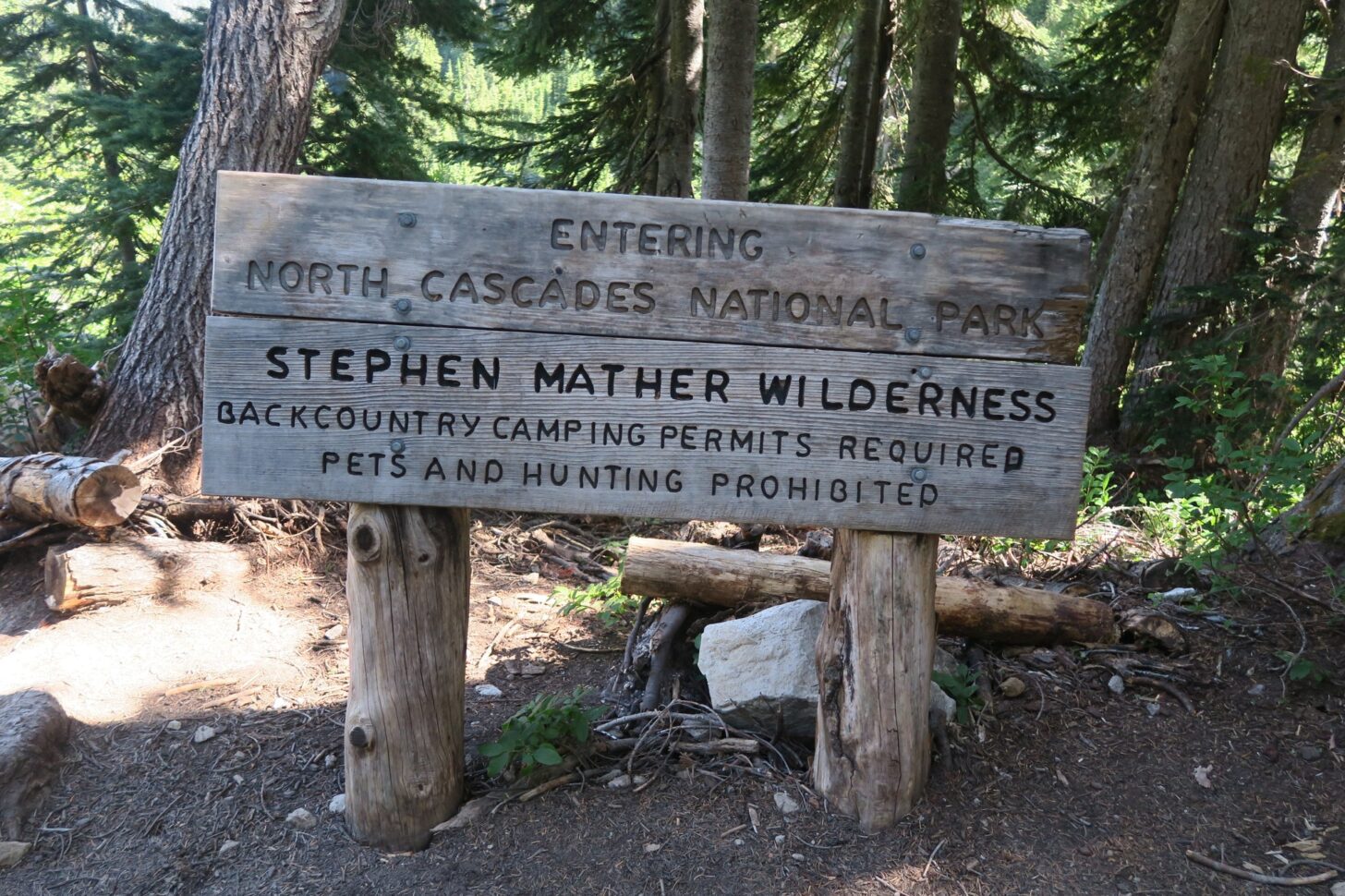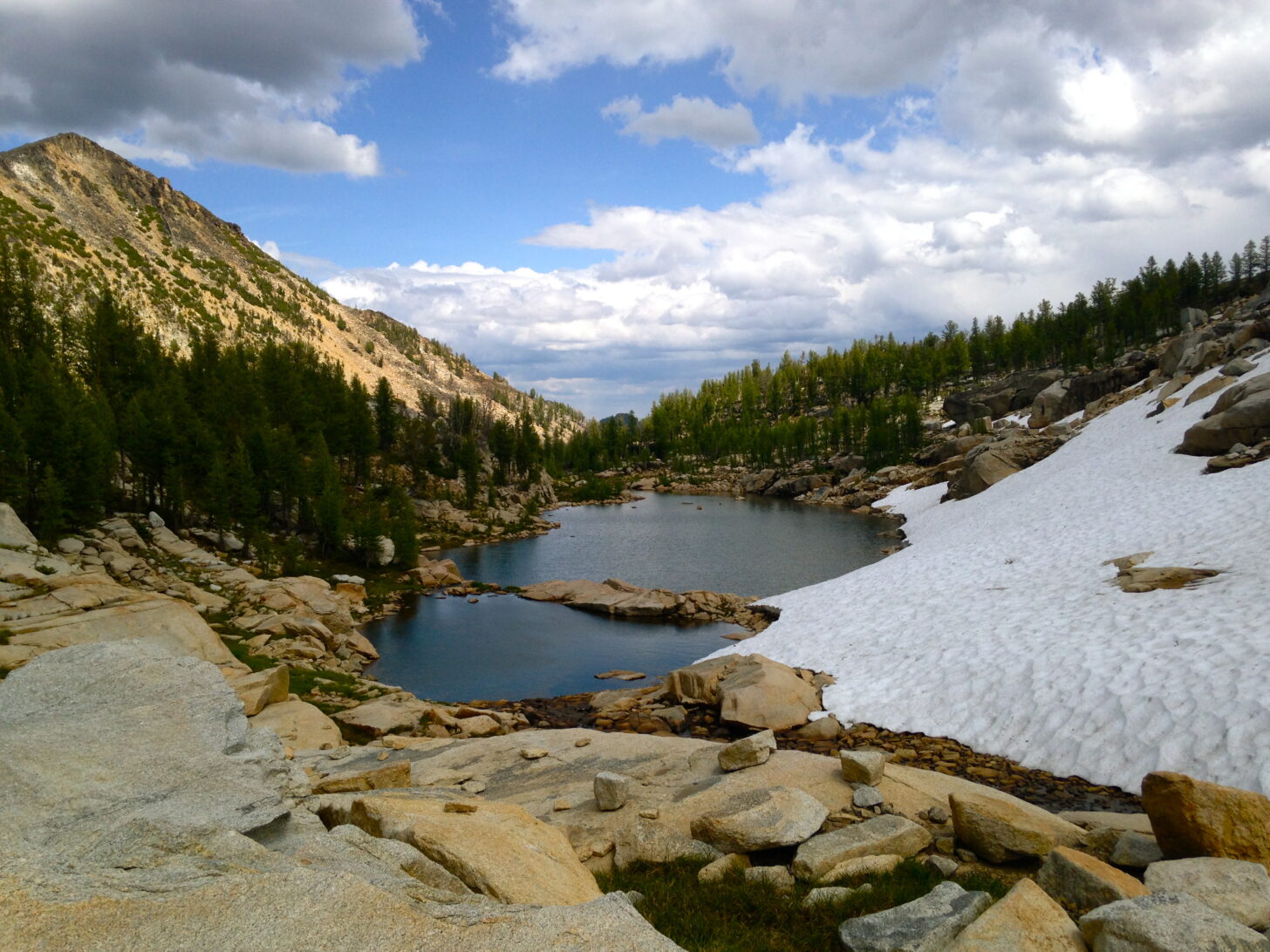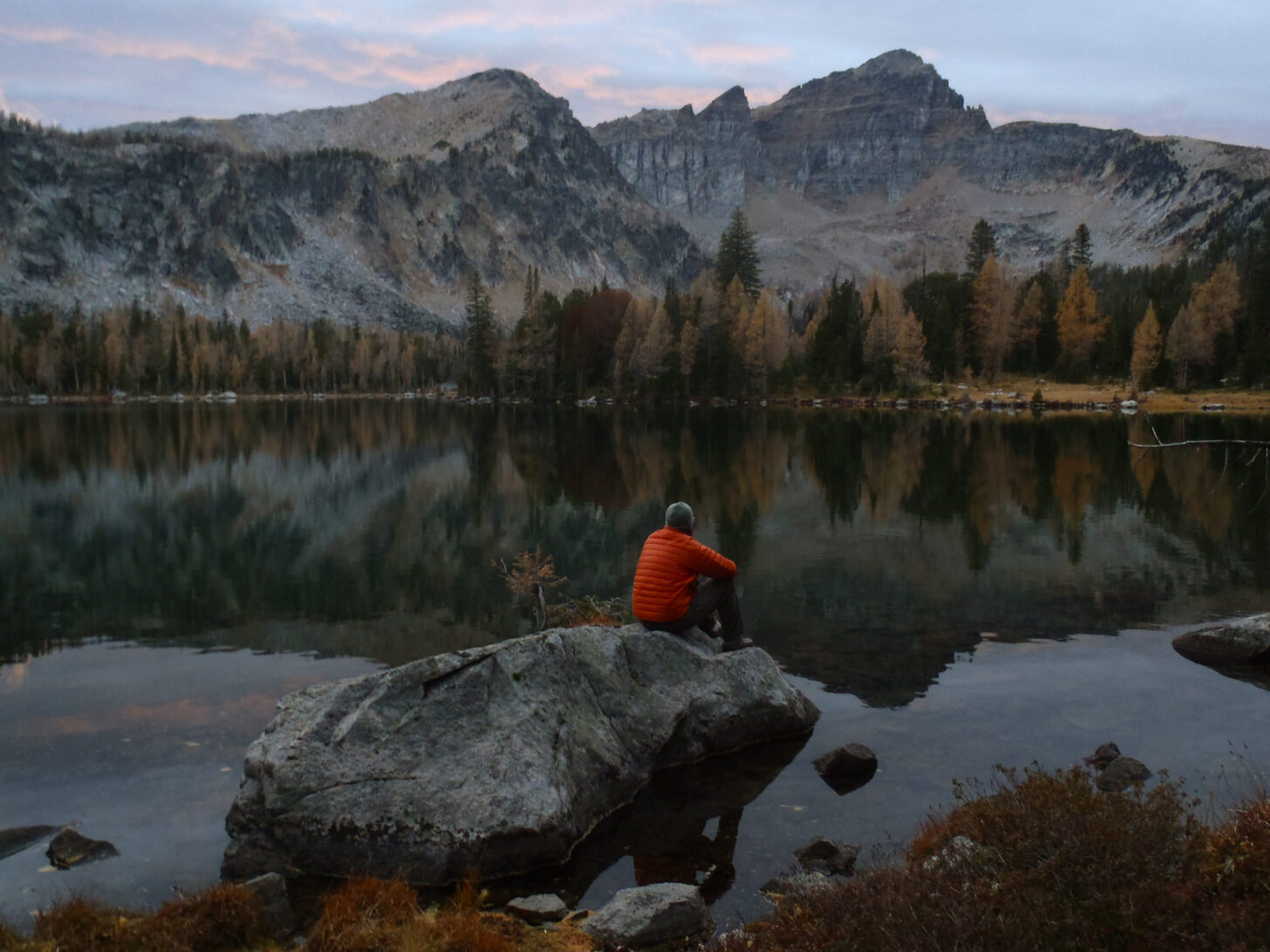Backpack, sleeping bag and pad, shelter – check. Assorted other essentials and accessories – check. Food for the duration of the trip – check. Transportation to and from the trailhead – check. In addition to these simple but not inexpensive items, a permit is becoming another essential – and sometimes frustratingly difficult to obtain – necessity depending on where you’re headed.

Although long required in virtually all national park units, permits are becoming more common in wilderness areas managed by the US Forest Service. Wilderness areas in western Oregon have recently implemented permit requirements as a result of increased use and are strongly correlated with social media popularity for certain destinations. After seeing use increase by roughly 400% in less than a decade, with social media again listed as a contributing factor by officials, a permit was put in place for Conundrum Hot Springs in Colorado in 2018.
And in wilderness areas managed by the US Forest Services that have had permits for decades, like the Enchantments area of the Alpine Lakes Wilderness, the increased demand for permits has left backpackers with a less than 2% chance of being able to camp in the most desirable locations. However, in some wilderness areas permits are more or less nominal and have been in place for years, like the Pasayten Wilderness in Washington and the Anaconda-Pintler Wilderness in Montana, where an unlimited amount are supplied at the trailhead for users to fill out on their own, and no quotas on visitor numbers are placed or reservations required. These permits are in place more as a means of tracking use and gathering statistical data than of limiting where people can camp.
Some national forests are also taking action to address issues of overuse and impacts outside of designated wilderness. The South Platte district of the Pike National Forest in Colorado is in the process of converting hundreds of previously first-come, first-served camping sites into reservable sites requiring fees. And in Kentucky, the Daniel Boone National Forest is also considering shifting to a system in the Red River Gorge where backpacking and dispersed camping are only allowed in designated sites that must be reserved.
As permits and crowded backcountry campsites become as common as Bluetooth speakers on once-quiet trails, backpackers rightfully wonder what might be done to slow the spread of this often necessary – but almost always inconvenient – way to manage use. One of the most popular ideas has been to be more mindful about the impact that geotagging and site-specific social media posts can have. The Washington Trails Association suggested this in 2015 and The Leave No Trace Center for Outdoor Ethics endorsed this practice in 2018. Since then, this idea has caught on among many in the outdoors community who would prefer to not risk contributing to the overuse of areas with limited recreational carrying capacity.

And, selfishly, their motivation also seems to stem from not wanting to see areas with a huge spike in visitation result in land managers implementing permits which take away much of the spontaneity and flexibility of wilderness travel. These hikers and backpackers believe that a low-key effort to maintain obscurity might save these places from becoming the next Broken Top Lake, where camping was banned after the lake become mobbed by backpackers and human waste littered the shoreline. Such fear isn’t overblown, as evidenced by previous examples and the worst-case scenario of the Grove of the Titans, where explicit location information posted online resulted in increased visitation that negatively impacted the health of some of the largest old-growth trees in the world.
Amusingly enough, many of the places people want to protect through obscurity really aren’t that obscure at all – they’ve been featured in guidebooks or magazine articles over the years, not to mention being clearly marked on USGS topographical maps for over a century (and, it must not be overlooked, were visited and stewarded by indigenous inhabitants for millennia before they were forcibly removed from their ancestral homelands). The information is out there for those who want to make a modicum of effort to research all the wonderful places to go on their public lands.
In addition, there are plenty of excellent free resources and articles on how to successfully use that information and how to plan a backpacking trip in general. The benefit to doing that research, at least historically, was being exposed to information about minimal-impact camping, environmental issues facing those public lands, and contact information for the advocacy groups and land management agencies that work to protect them.

This notion of community self-regulation as an attempt to reduce the need for official regulation via permits has resulted in significant handwringing in the Extremely Online Outdoors Ecosystem about whether such a practice is gatekeeping. Most notably, Leave No Trace reversed their stance on geotagging, without any explanation or evidence to support this change, in 2020. While it is certainly important to be concerned about inadvertently creating additional barriers to outdoor recreation, particularly if such barriers demonstrably and disproportionately impact groups of people who are already underrepresented and don’t feel welcome on their public lands, nearly the entirety of the discourse about alleged gatekeeping lacks much intellectual or ethical rigor and fails to use an evidence-based approach to understanding and mitigating the complex issues created by increased use of public lands.
The ideas put forth – keep geotagging and hyping up areas on social media despite the inability of their infrastructure to handle increased visitation – almost inevitability result in land managers implementing permits when areas become overcrowded and negatively impacted, creating a classic case of unintended and adverse consequences brought about by good intentions.
Requiring permits as a way to manage increased visitation creates an additional and actual barrier to accessing the outdoors, not just a digital one. And this actual barrier typically costs money to overcome (i.e. permit fees) and is ultimately enforced by People With Guns (i.e. park rangers or other agency law enforcement personnel.) This makes someone being a bit vague about the location in their Instagram photo or in the trip report they posted on Reddit, or Backpacking Light for that matter, seem quaint or even downright silly by comparison. Especially when there is an abundance of information available, for free, to allow even the newest backpacker to successfully plan a trip once they have the inspiration to get outdoors.
And such inspiration is inescapable in even the most banal mainstream media these days, where even a credit card commercial might evoke alpine imagery, much less in the social media subgroups specifically focused on outdoor recreation. There is more information, and free ease of access to such information, than ever before to allow hikers and backpackers to disperse themselves, but social media has indisputably had a concentrating effect.
Some posit that even if increased visitation does result in the inconvenience of permits that, on balance, this is a small price to pay for more people experiencing the outdoors and therefore becoming advocates in regard to environmental issues. It would be nice if this apparent truism was actually true, but the limited amount of research seems to suggest that it is perhaps wishful thinking and is most often applicable only in more narrow contexts.

When viewed through the lens of another outdoor activity – rock climbing – a hyper-specific approach to information sharing is not just unhelpful, it’s poor form and denies people the opportunity to figure things out for themselves and the sense of achievement that comes from doing so. Part of the beauty of rock climbing is figuring out each route on your own – of solving the physical and mental puzzle nature created. When climbing a route and pausing to figure out the next move, it can be maddening to have some overly helpful bystander who previously climbed the route shout up “Just match your left foot with your left hand, and then throw with your right hand to the flake that’s left of the pocket up there, it’s a huge undercling and you can stand up and clip from there, then match both hands until you get your feet up and then put your left hand onto the jug above the bolt, then you’re done with the crux and it’s easy climbing to the top . . .”
By the time they’re done spraying you down with unrequested information, much of the mystery of the route is gone and, for most people, the magic and joy of the experience is greatly diminished. That’s why the ethic in climbing is to wait until someone asks for help before offering advice, rather than just assuming that others are incapable of accomplishing what they set out to do without receiving your unsolicited instructions.
Encouraging a similar ethic for backpacking in wilderness areas, which are explicitly managed for solitude as well as other values listed in the Wilderness Act, seems to be appropriate. As amazing as a good backpacking trip can be when done step-by-step from a guidebook description or with information from social media, it pales in comparison to pulling off a trip that you planned largely on your own. Stumbling across an unexpected waterfall on a cross-country jaunt taken on a whim from a basecamp, spotting a pictograph in a remote canyon during a spur-of-the-moment side trip, or finding a route from one lake basin to another that looked impassable on a map are joys that can rarely be planned – they manifest themselves through curiosity, sweat, and determination.

Given the current trend towards permits, and the sobering fact that once they’re instituted by a land management agency they have almost never been removed, I think one of the best skills new hikers can develop in regard to backpacking is learning how to spread out and discover the beautiful and uncrowded places you can go without needing a permit. Check out guidebooks from the library (free!), browse CalTopo online (also free!), flip through magazines like Backpacker, TrailGroove, or Backpacking Light or browse their websites, strike up a conversation at the trailhead with another backpacker and see what ideas for trips you can glean, and call ranger stations for ideas. Look at trip reports online or on social media for inspiration, but not with an entitled mentality that just because someone posts a picture of a delightful campsite that is on public land that they are obligated to send you a GPX track or provide any additional information. Learn to be OK with participating in a community where people might be happy to help get you in the ballpark – naming the national park or national forest – but not willing to assign you a seat by telling you the exact lake or meadow they camped at.
And then, once you have honed that skill and have found places off-the-beaten-path to form indelible memories of sunsets and forests and peaks and streams, consider exercising some discretion in how far and wide you broadcast detailed information about such places. Being more general in regard to a location, or even not posting at all, since Outdoors Social Media can be a bit toxic once you take a step back and reflect on it, certainly isn’t a panacea to the problems impacting our lands.
Volunteering your time doing trail work, advocating for increased funding for public lands, or donating to organizations that advocate for more wilderness or other important causes (like reducing equipment and financial barriers to outdoor recreation for groups historically disenfranchised from enjoying their public lands) are much better ways to make a difference than merely adjusting your habits on social media.
But if thinking critically before you post on social media can prevent or delay even just a few places from being impacted by overuse and having permits implemented, it seems worth it to allow those who visit them – now and in the future – to have a high-quality experience that they don’t have to book months in advance on recreation.gov and help enrich government contractors. There’s enough public land for all of us to have the indescribable and soul-lifting feeling that comes from experiencing true solitude in stunning natural landscapes. We can’t all have solitude in the same place at the same time, but protecting the solitude of the places we cherish – so that others can find and experience it as well – is a responsibility we can each choose to practice.




Home › Forums › Unpacked: Reservations Required